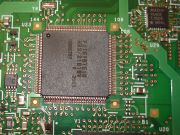Dear Lazyweb,
Why doesn't inotifywatch /sys/kernel/uevent_seqnum work? I get no changes reported at all – and I've even tried using inotify in C adding a watch for IN_ALL_EVENTS. Maybe I'm being really stupid here, but inotify doesn't seem to work at all for sysfs. Help appreciated.
Thanks.
EDIT: Yes, I was being stupid. sysfs doesn't change the value until the file is read. Of course. poll to the rescue, except now that doesn't even work…





